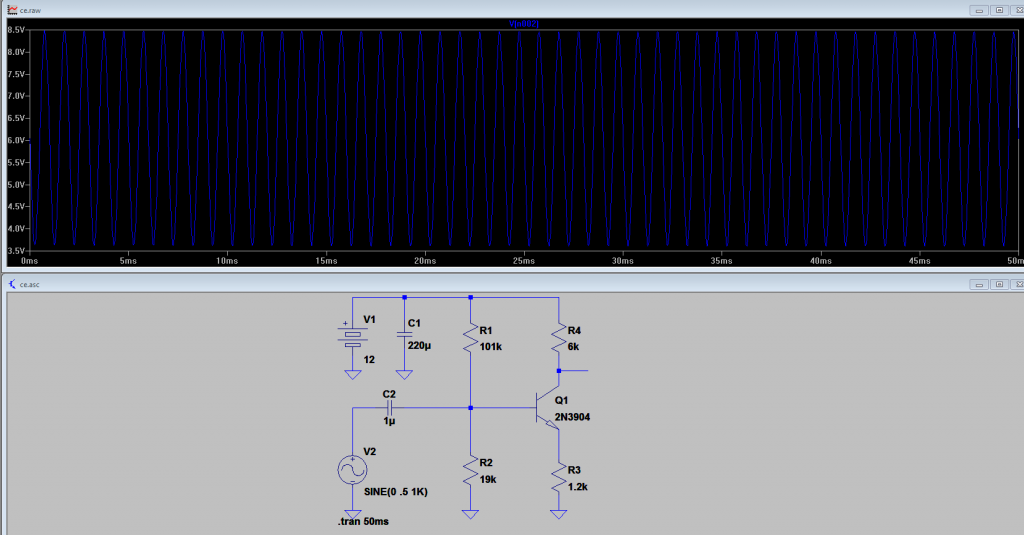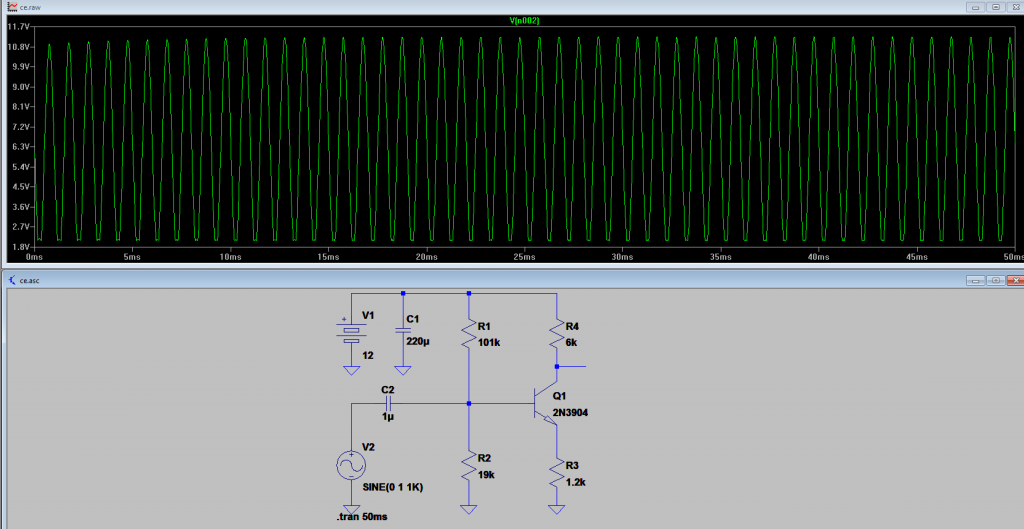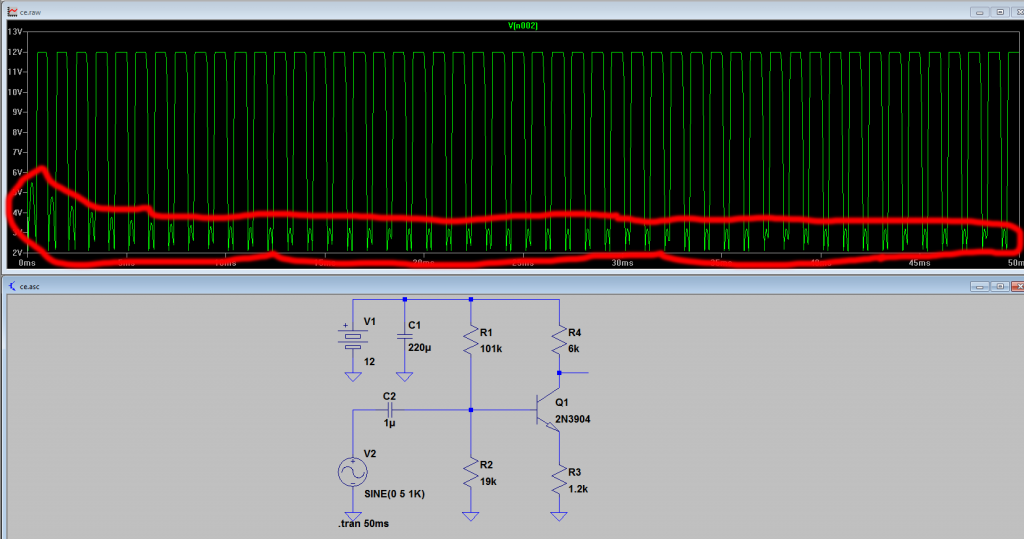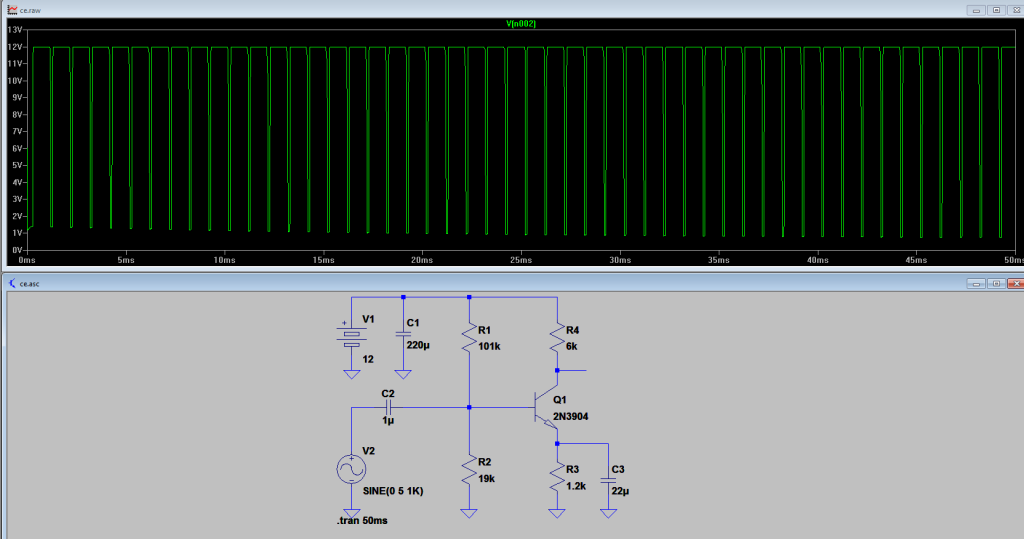Well, it works. I was looking at the Big Muff Pi schematic and it used 10k for the series resistor so that's what I tried first and worked.

EDIT: However, when the bypass cap is removed the "collector following" returns and I had to up the value to 27k.
With no bypass cap and no series resistor the amplifier has a gain of 5. However when I add the 27k series resistor, the gain drops off quite substantially ( I measured it at 1.8 ). It seems like the higher the amplitude of your signal, the higher the value that resistor needs to be to keep the transistor from saturating BUT the higher the value of the resistor, the less voltage gain you get out. So they sort of work against each other.
So it looks like if you want lots of gain without saturating the transistor, you NEED the bypass capacitor.
Interesting.
EDIT: However, when the bypass cap is removed the "collector following" returns and I had to up the value to 27k.
With no bypass cap and no series resistor the amplifier has a gain of 5. However when I add the 27k series resistor, the gain drops off quite substantially ( I measured it at 1.8 ). It seems like the higher the amplitude of your signal, the higher the value that resistor needs to be to keep the transistor from saturating BUT the higher the value of the resistor, the less voltage gain you get out. So they sort of work against each other.
So it looks like if you want lots of gain without saturating the transistor, you NEED the bypass capacitor.
Interesting.



 so probably 10Vpp (or even less) available will not make it act that funny.
so probably 10Vpp (or even less) available will not make it act that funny.


